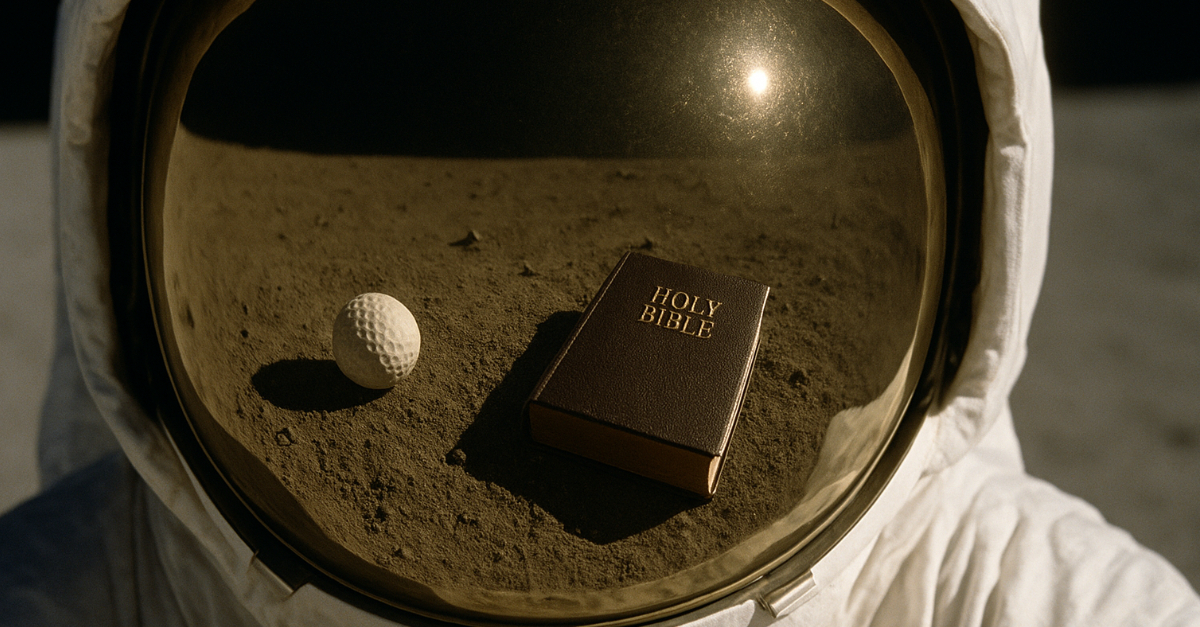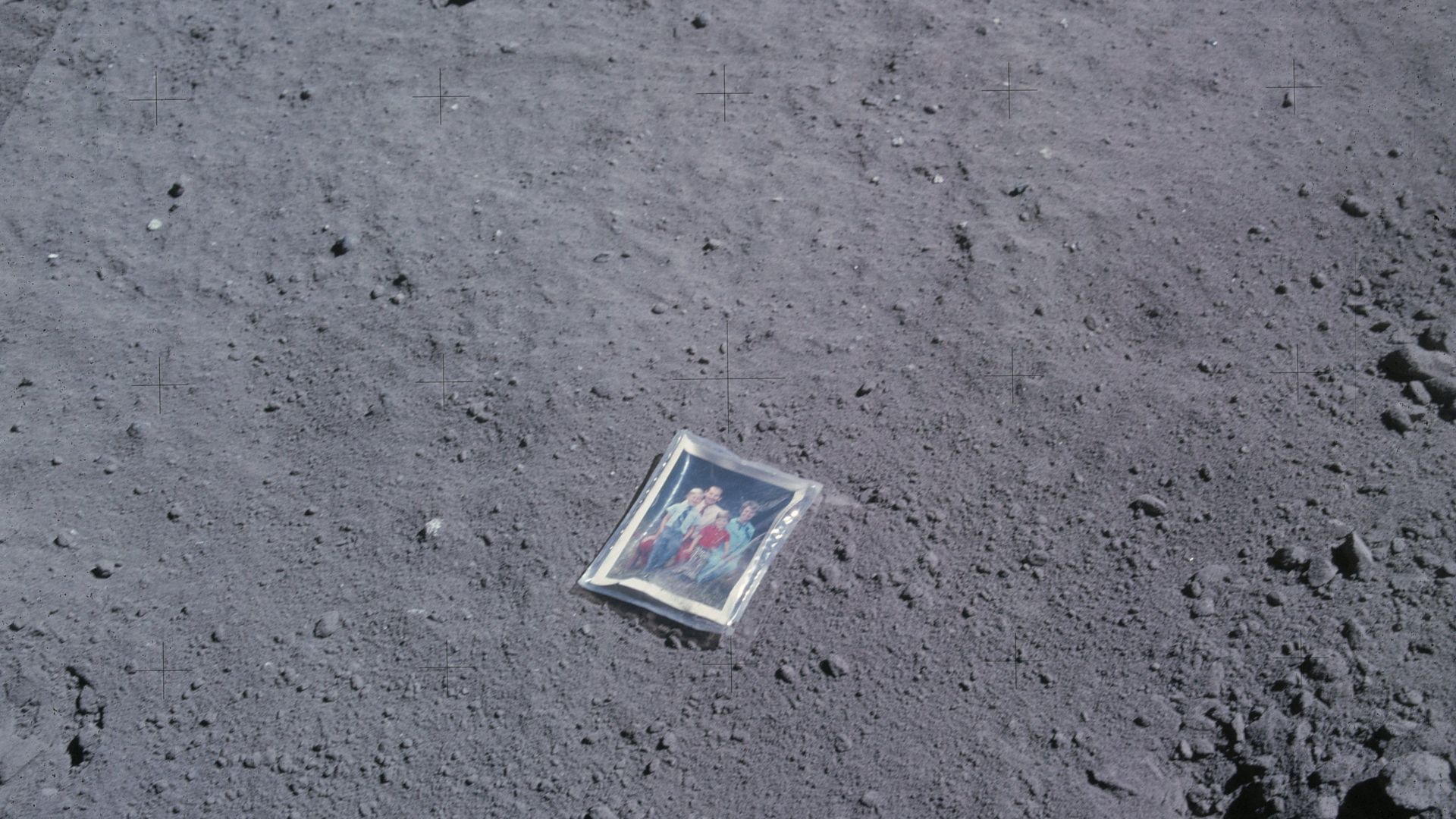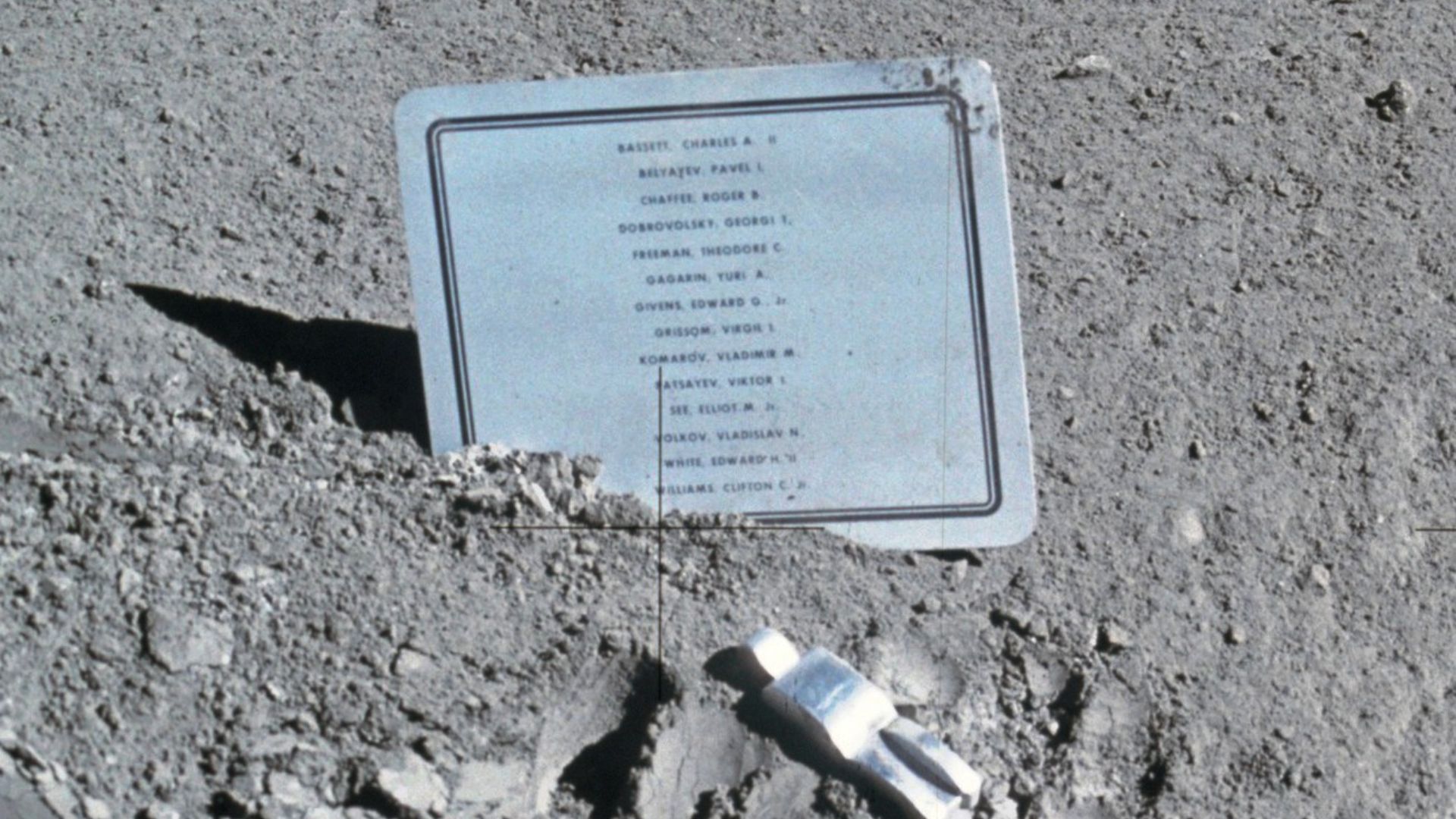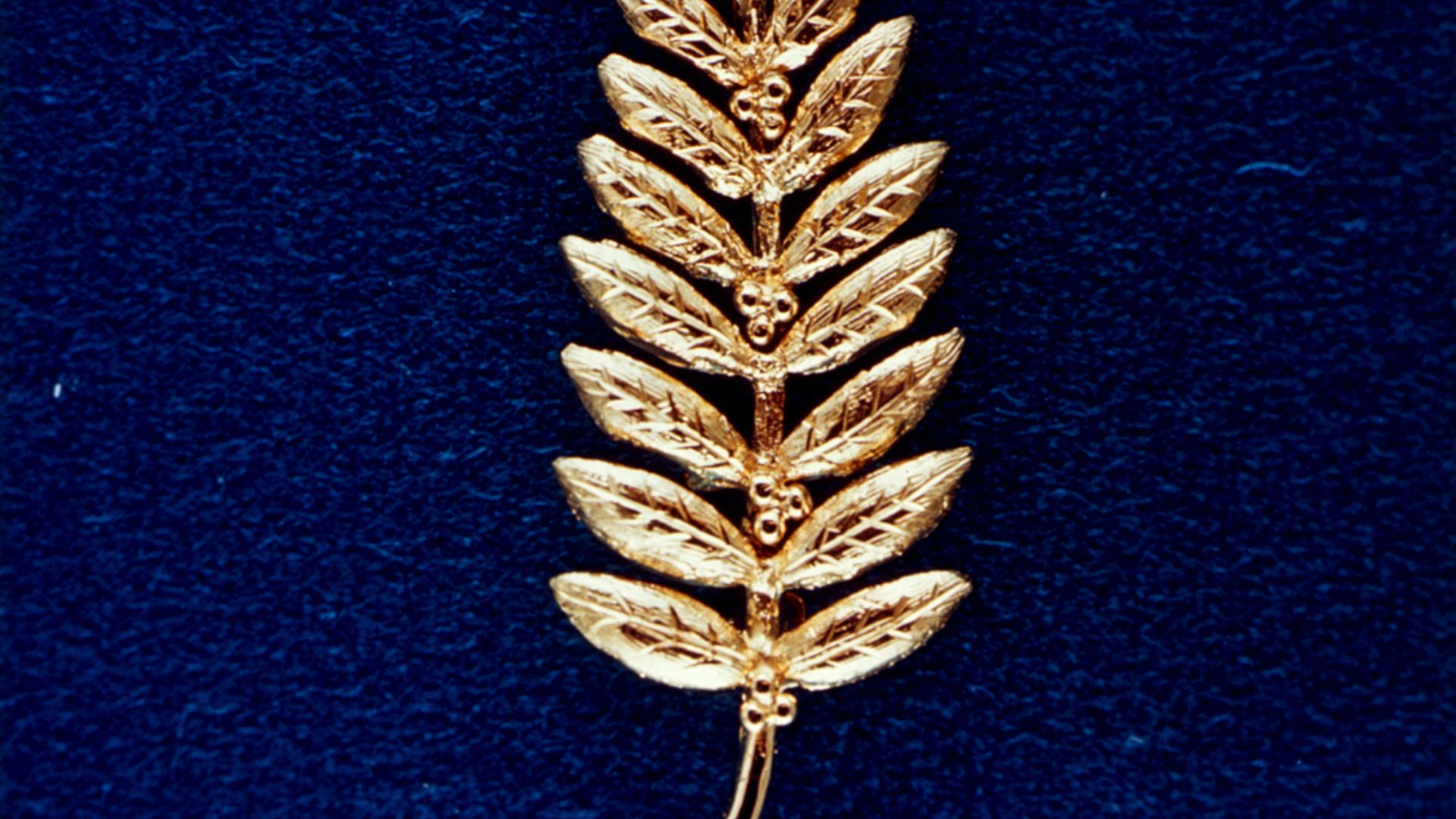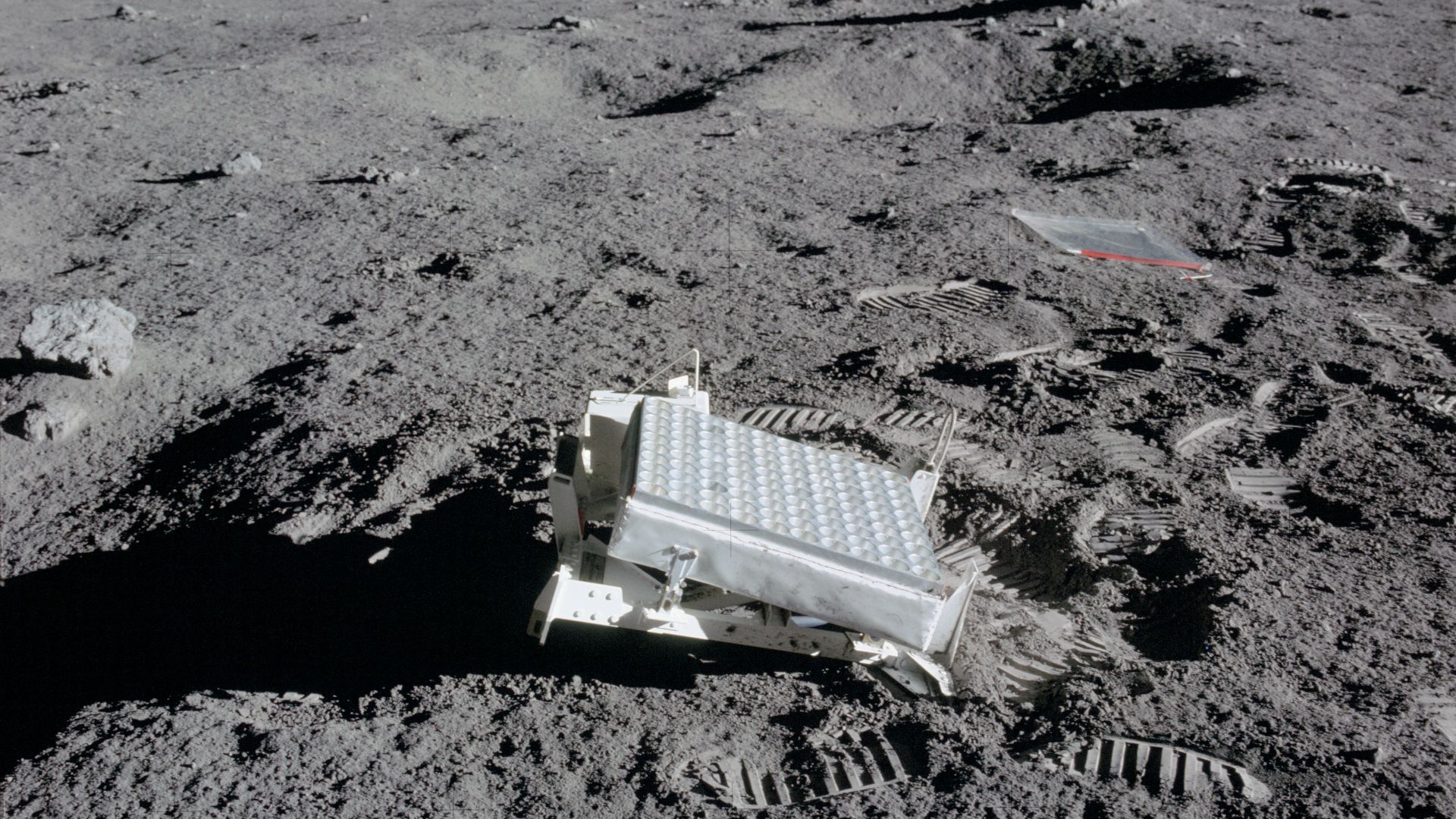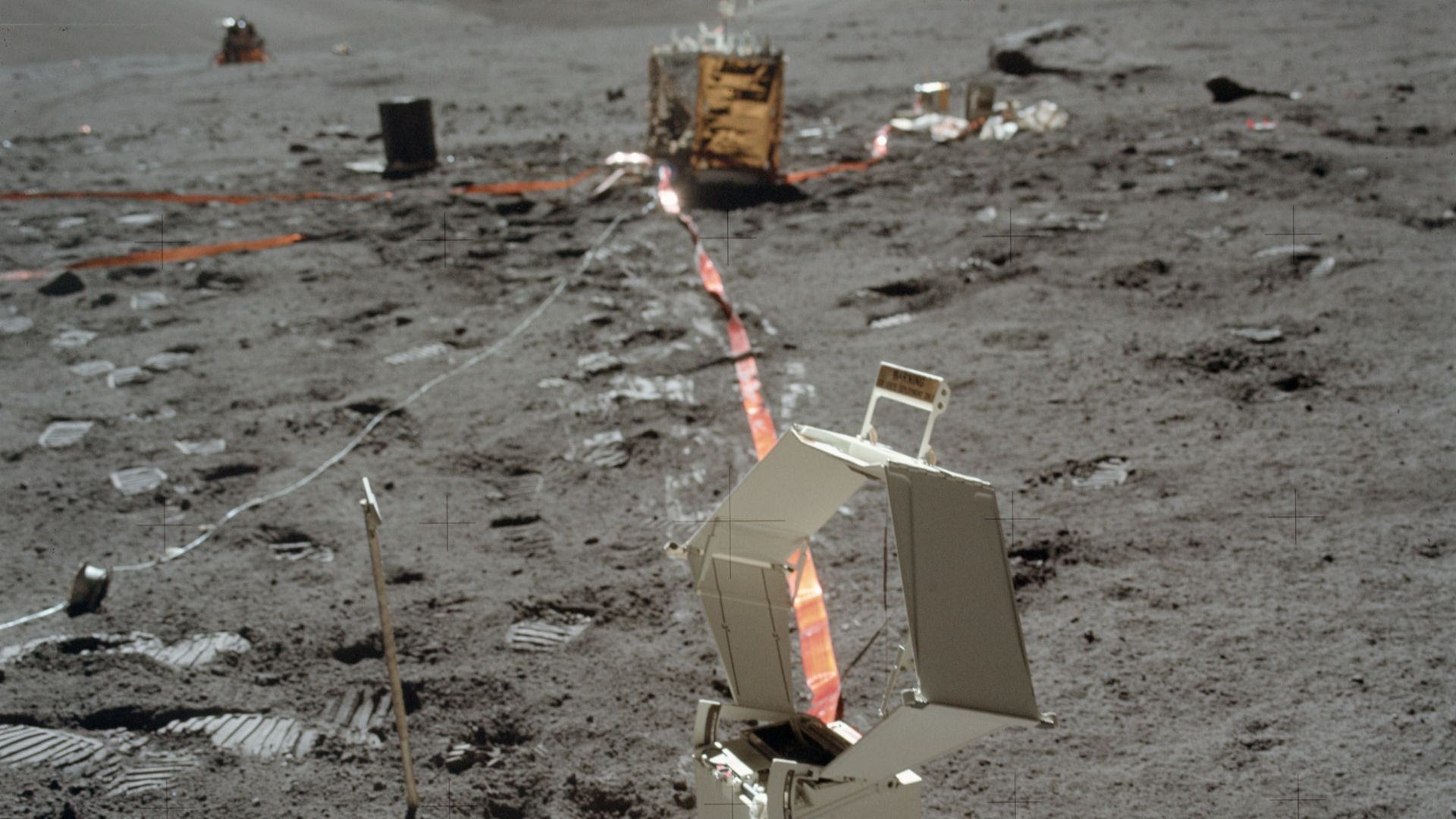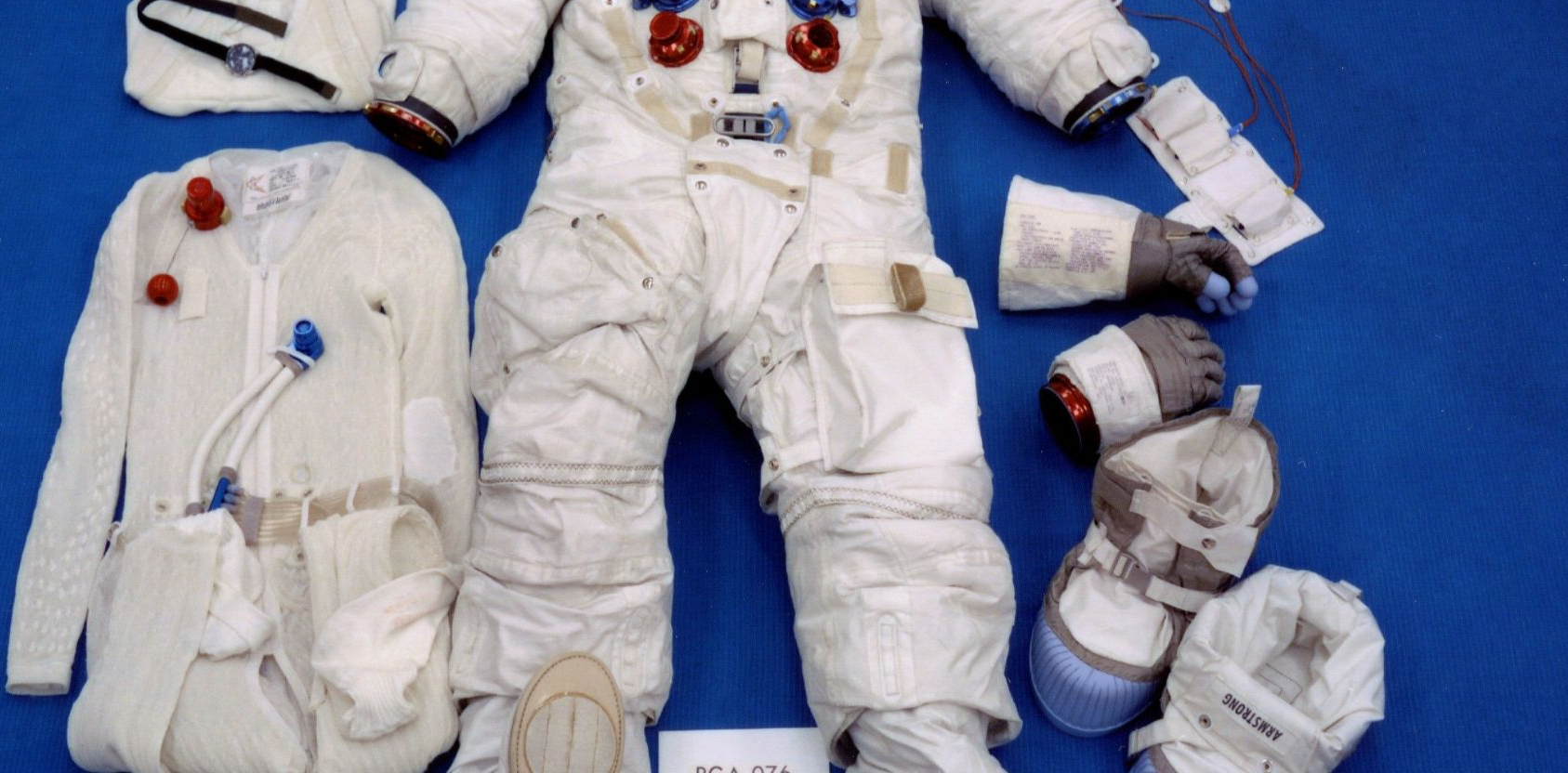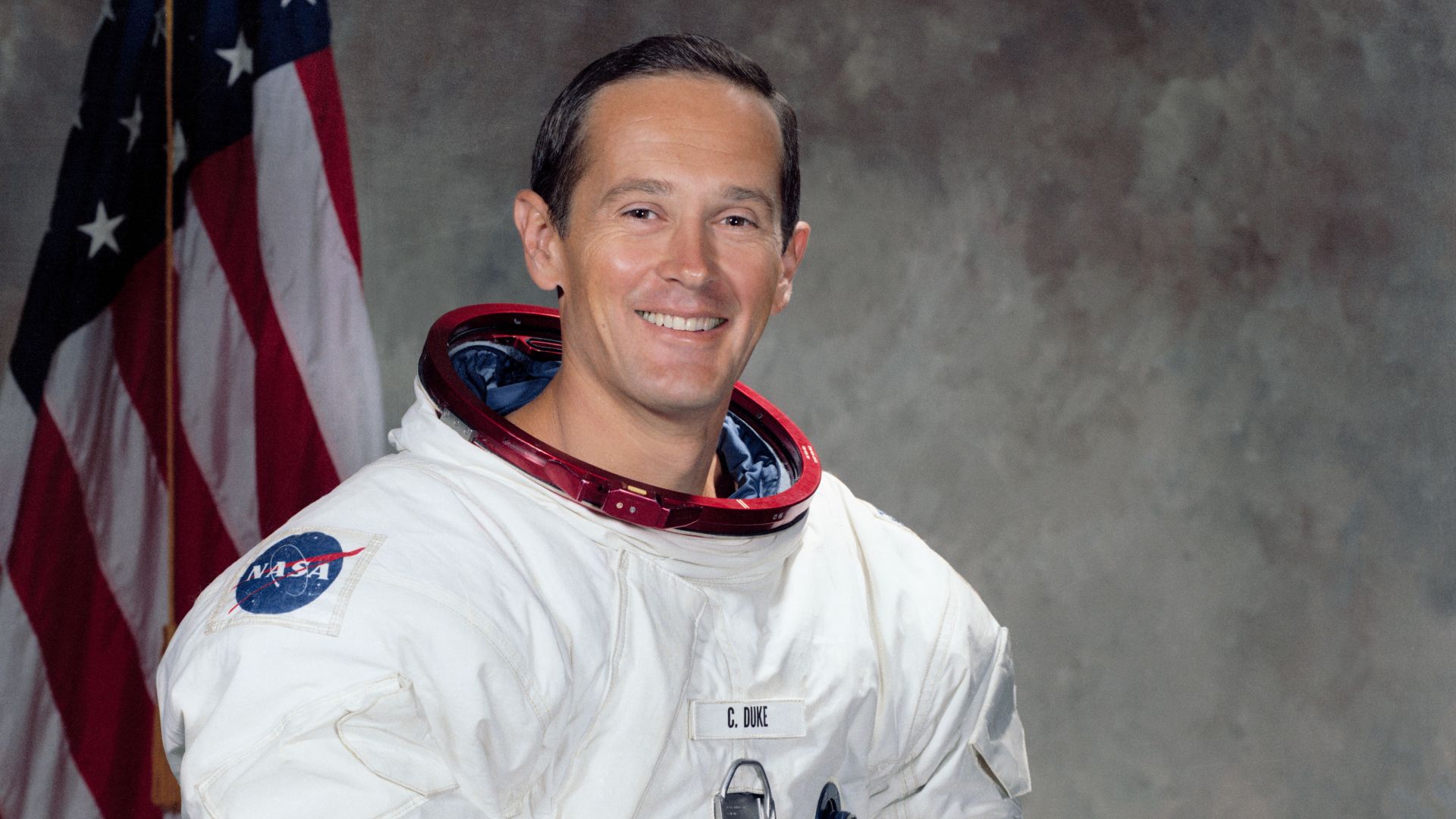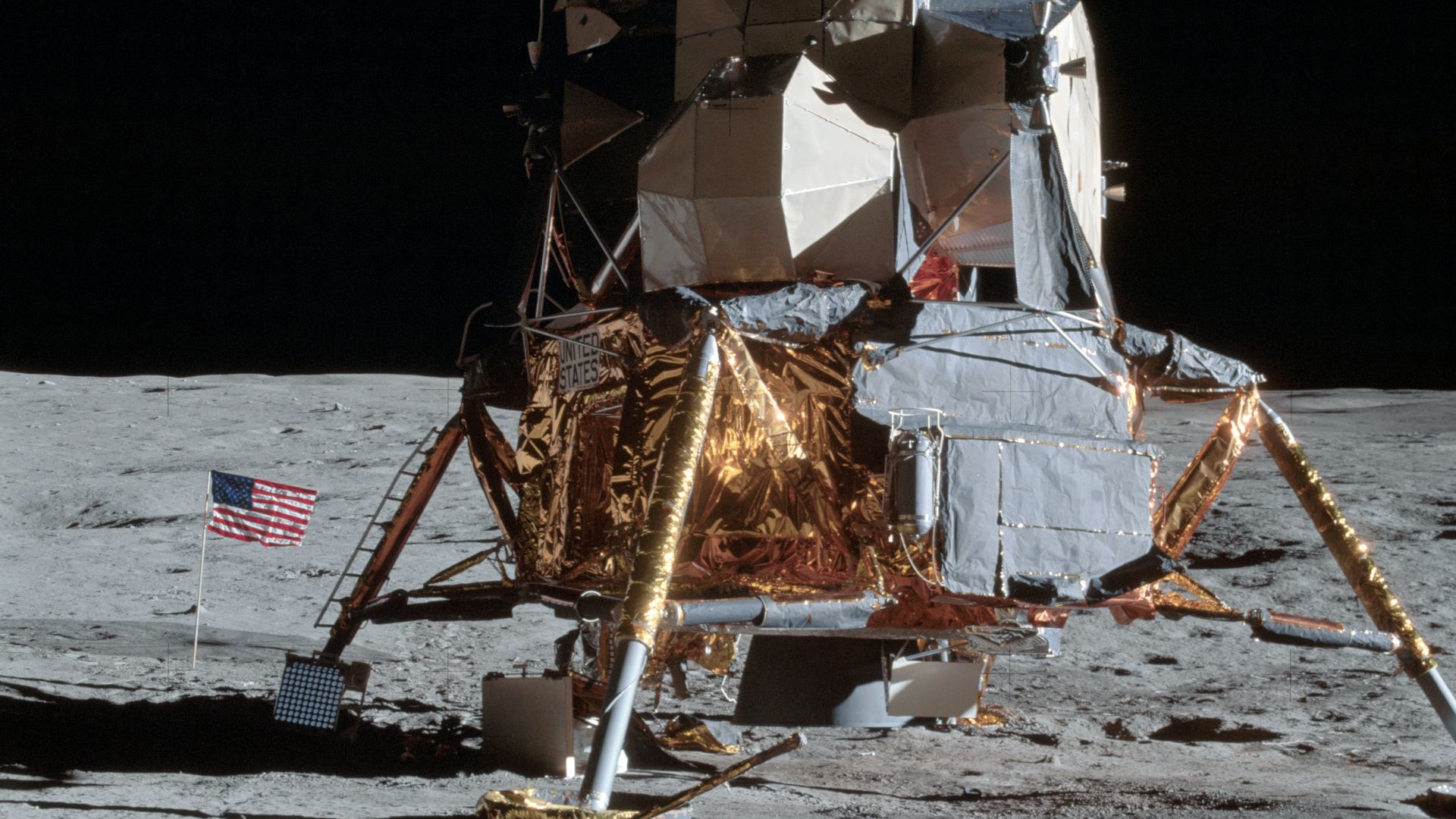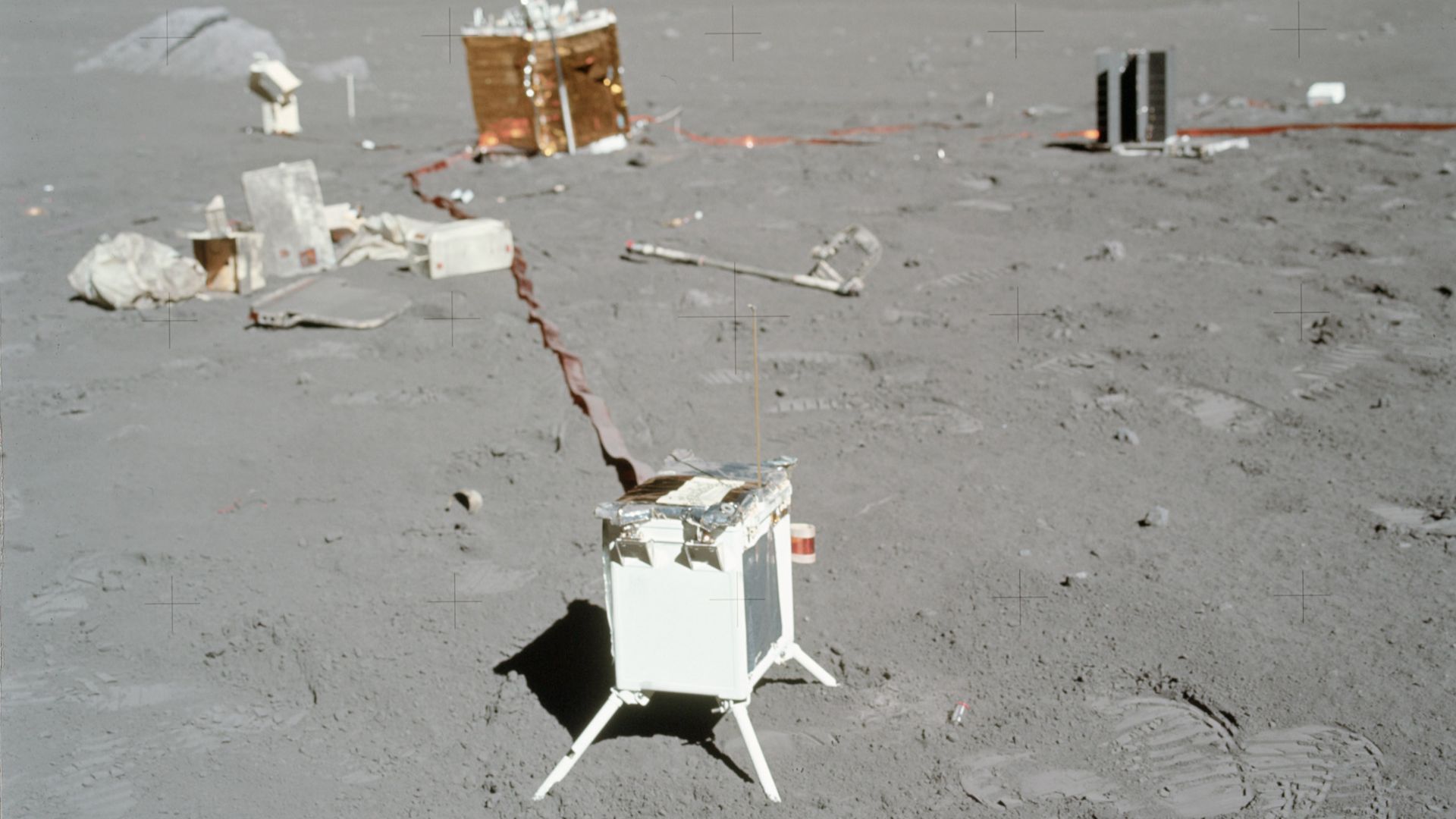A Lunar Lost & Found
The Moon isn’t just a dusty gray rock—it’s also a cosmic storage unit for the weirdest stuff humans have ever abandoned in space. From golf balls to nuclear-powered science gear (and pretty much everything in between), astronauts have left behind a mix of practical, symbolic, and downright quirky objects.
Let’s take a tour of humanity’s strangest lunar souvenirs.
Dollar Bills on the Moon
Among Apollo 15’s stranger souvenirs: a $2 bill and a $20 bill left on the lunar surface. Why? Astronauts often carried currency and trinkets as mementos. Some made it back, but these bills stayed behind—turning the Moon into the oddest place for a lost wallet.
Alan Shepard’s Golf Balls
In 1971, Apollo 14 astronaut Alan Shepard secretly smuggled a six-iron head, attached it to a tool handle, and took two swings. His claim of 200-yard shots was an exaggeration—they went closer to 40 yards—but both balls are still lying somewhere in the Fra Mauro highlands, making them the world’s most inaccessible sports equipment.
 San Francisco Chronicle/Hearst Newspapers, Getty images
San Francisco Chronicle/Hearst Newspapers, Getty images
Six American Flags
Astronauts from Apollo 11, 12, 14, 15, 16, and 17 each planted a U.S. flag. The fabric wasn’t built to withstand unfiltered sunlight, so most are now bleached white. Some may still be upright, but others toppled when rockets blasted off. Either way, they remain among the most iconic objects left behind.
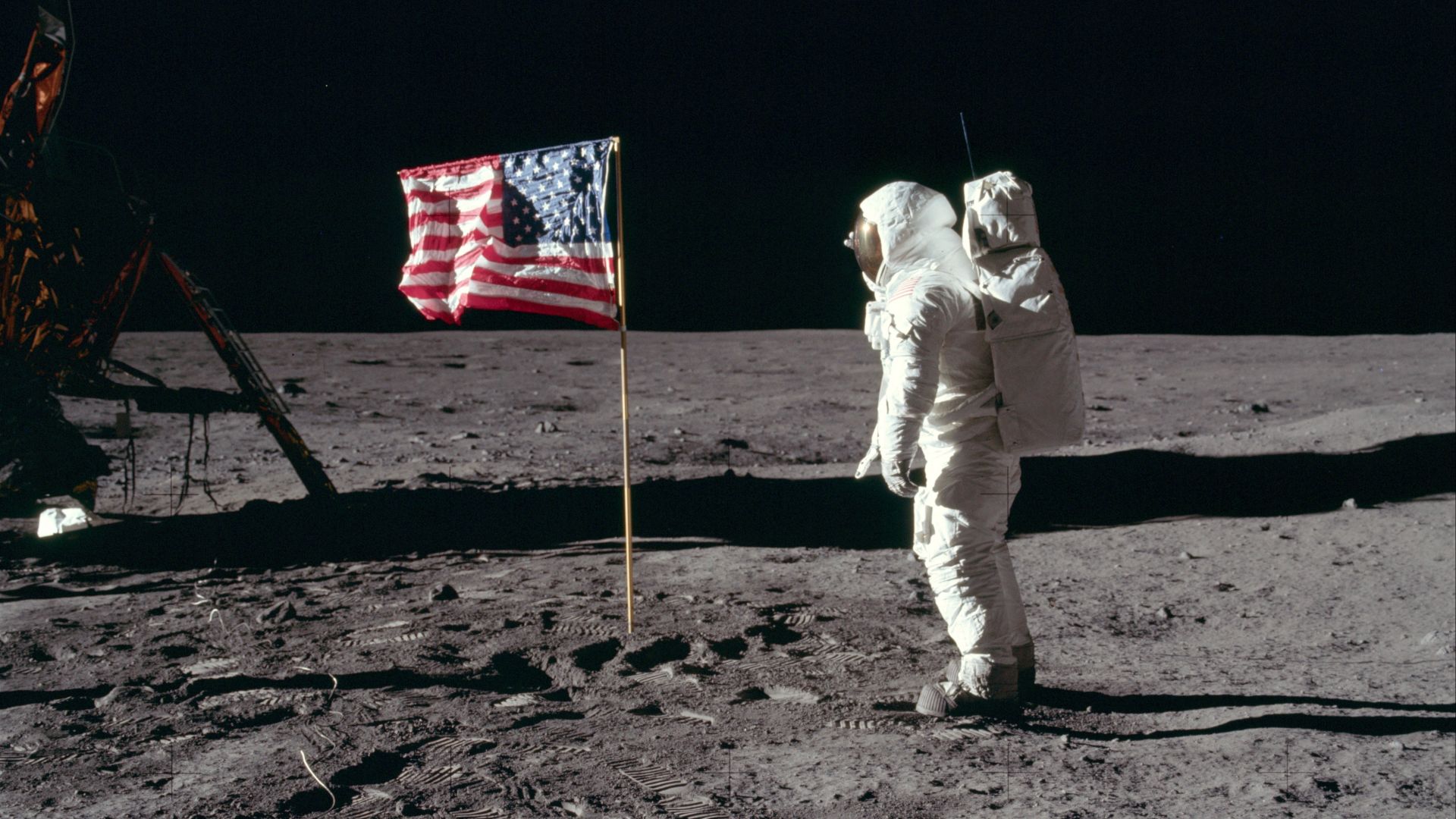 NASA / Neil A. Armstrong, Wikimedia Commons
NASA / Neil A. Armstrong, Wikimedia Commons
Charles Duke’s Family Photo
Apollo 16 astronaut Charles Duke left a laminated photo of himself with his wife and two sons on the lunar surface. He described it as “sitting on the Moon forever.” Harsh conditions have probably erased the image by now, but the gesture remains one of the most personal—and touching—lunar artifacts.
Astronaut Boot Prints
Perhaps the most poetic artifacts are footprints. With no wind, water, or tectonics to erase them, astronaut tracks are stamped permanently into lunar soil. Neil Armstrong’s “one small step” is still visible more than 50 years later. These prints will outlast every monument on Earth, unless a meteor hits them first.
 Buzz Aldrin, Wikimedia Commons
Buzz Aldrin, Wikimedia Commons
Lunar Roving Vehicles
The Moon has three parked cars—except they’re battery-powered lunar rovers from Apollo 15, 16, and 17. Each was used to cruise several miles during moonwalks before being abandoned. They look like stripped-down dune buggies, with wire mesh tires and no roof. Today, they’re still parked like cars in a very dusty garage.
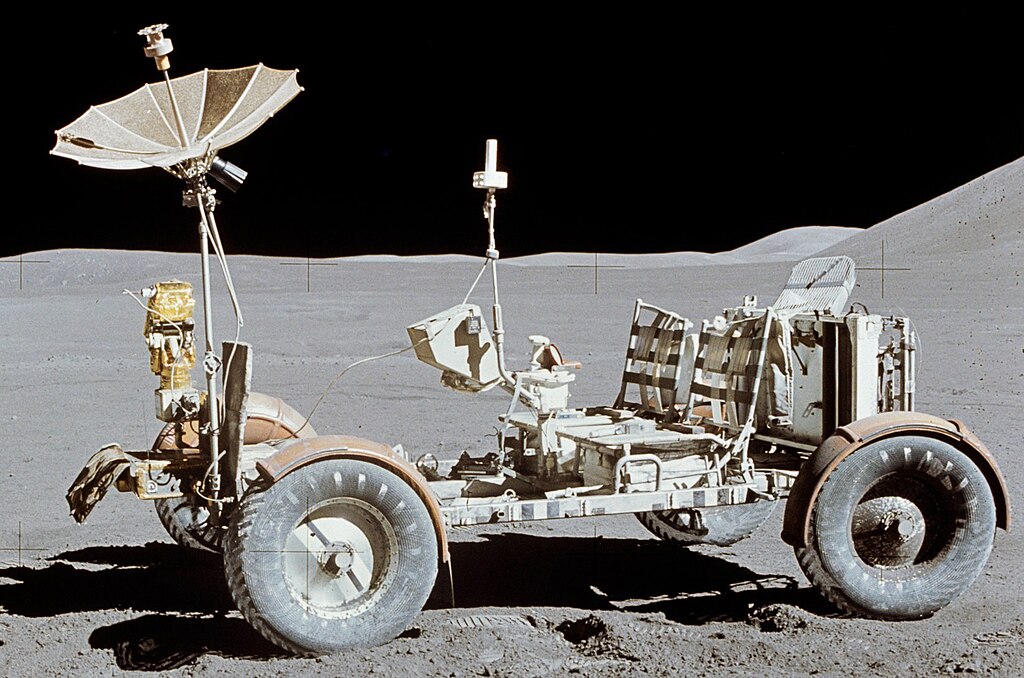 NASA/Dave Scott, Bubba73, Wikimedia Commons
NASA/Dave Scott, Bubba73, Wikimedia Commons
The Fallen Astronaut Memorial
On Apollo 15, astronauts David Scott and James Irwin placed a small aluminum figurine of a fallen astronaut alongside a plaque inscribed with the names of 14 space explorers who died in the line of duty. This simple, solemn monument remains the only memorial on the Moon.
Human Waste Bags
Not everything is sentimental. Astronauts left behind around 96 bags of human waste—urine, feces, and even vomit. NASA couldn’t justify hauling them back, so they were dumped on the surface. Ironically, these bags could be scientifically valuable one day, preserving microbes to test how Earth biology survives in space.
 How did Apollo astronauts poop in space? 💩, Air Zoo
How did Apollo astronauts poop in space? 💩, Air Zoo
The Goodwill Messages Disc
Apollo 11 carried a tiny silicon disc etched with goodwill messages from 73 world leaders, including signatures from presidents, prime ministers, and even Pope Paul VI. Buried in the Sea of Tranquility, it’s essentially a cosmic time capsule meant to show that humanity’s first lunar steps were for all nations.
A Gold Olive Branch
As another peace symbol, Apollo 11 astronauts also left a small golden olive branch. At the height of the Cold War, this tiny emblem was meant to send a message that space exploration was about cooperation, not conquest. It remains a hopeful little artifact in an otherwise desolate landscape.
Hammer and Feather Experiment
Apollo 15 commander David Scott proved Galileo’s principle of gravity by dropping a hammer and a falcon feather at the same time. With no air resistance, both hit the ground together. The demonstration was broadcast worldwide—and both objects still rest there, a lasting physics lesson on the Moon.
Retroreflectors
Apollo 11, 14, and 15 left behind laser retroreflectors—essentially mirrors designed to bounce light back exactly where it came from. Scientists on Earth still fire lasers at them to measure the Earth-Moon distance down to centimeters. These experiments are still useful decades later, making them one of NASA’s best “leftovers.”
ALSEP Instruments
From Apollo 12 to 17, astronauts deployed ALSEP packages—the Apollo Lunar Surface Experiments Package. These included seismometers to detect “moonquakes,” magnetometers, and dust detectors. Though they stopped transmitting in 1977, the gear is still scattered across landing sites, silent witnesses to one of humanity’s greatest experiments.
Hasselblad Cameras
To save weight for lunar rocks, astronauts ditched their bulky Hasselblad cameras. The film cartridges came home, but the metal bodies stayed behind. Somewhere on the Moon, cameras are still pointed at the horizon, frozen in place as if waiting for their next shot.
 NASA/Charles Conrad, Wikimedia Commons
NASA/Charles Conrad, Wikimedia Commons
Empty Film Magazines
Along with the cameras, astronauts tossed aside empty film magazines. They’d already captured the iconic photos, so the canisters weren’t worth hauling back. They remain scattered around the landing sites, part of the Moon’s accidental photo studio.
 The original Hasselblad film magazine used on the Moon! #apollo11, Amateur Photographer TV
The original Hasselblad film magazine used on the Moon! #apollo11, Amateur Photographer TV
Rocket Stages
Five enormous third stages of Saturn V rockets (S-IVBs) were deliberately crashed into the Moon to test seismometers. Each weighed more than 13 tons. Today, they’re among the largest human-made objects on the lunar surface, buried in impact craters created by their own collisions.
 Roland Arhelger, Wikimedia Commons
Roland Arhelger, Wikimedia Commons
The Moon Museum
Apollo 12 secretly carried a ceramic wafer with microscopic artworks by Andy Warhol, Robert Rauschenberg, Claes Oldenburg, and three others. Known as the “Moon Museum,” it was a guerrilla art project hidden aboard by an engineer. If true, it makes the Moon home to humanity’s first extraterrestrial art installation.
Alan Bean’s Silver Astronaut Pin
Astronaut Alan Bean left behind his silver astronaut pin as a tribute to his colleague Clifton Williams, who died in a training accident before Apollo flights. For Bean, placing it on the Moon was a symbolic gesture of remembrance for a friend who never got to make the journey himself.
 NASA / Johnson Space Center (NASA-JSC), Wikimedia Commons
NASA / Johnson Space Center (NASA-JSC), Wikimedia Commons
A Bible on the Moon
Apollo 15 commander David Scott left a Bible among his personal items. Tiny microfilm Bibles also rode along on Apollo 14, though not all were left behind. Whether symbolic or spiritual, scripture is literally part of humanity’s lunar legacy.
A Medal for Fallen Cosmonauts
In a rather surprising Cold War gesture, Apollo 11 astronauts left medals honoring Soviet cosmonauts Yuri Gagarin and Vladimir Komarov—both of whom died during missions. It was a small but powerful act of respect for rival explorers who helped pave the road to space.
 Министерство обороны СССР, Wikimedia Commons
Министерство обороны СССР, Wikimedia Commons
Cooling Garments and Drinking Devices
Astronauts wore liquid-cooled undergarments and used in-suit drinking systems. When they no longer needed them, many were discarded. Alongside hammocks, straps, and other gear, they add to the Moon’s odd inventory of high-tech laundry and camping supplies.
Charles Duke’s Air Force Medal
Along with his family photo, Charles Duke left one of his U.S. Air Force medals on the surface during Apollo 16. The second medal was kept on Earth, but one remains up there as both a military honor and a personal keepsake.
The Apollo 11 Trash Bag
Armstrong and Aldrin started the tradition of leaving trash behind. Their bag included food wrappers, hygiene supplies, and other mundane odds and ends. It was the first lunar garbage dump—and far from the last.
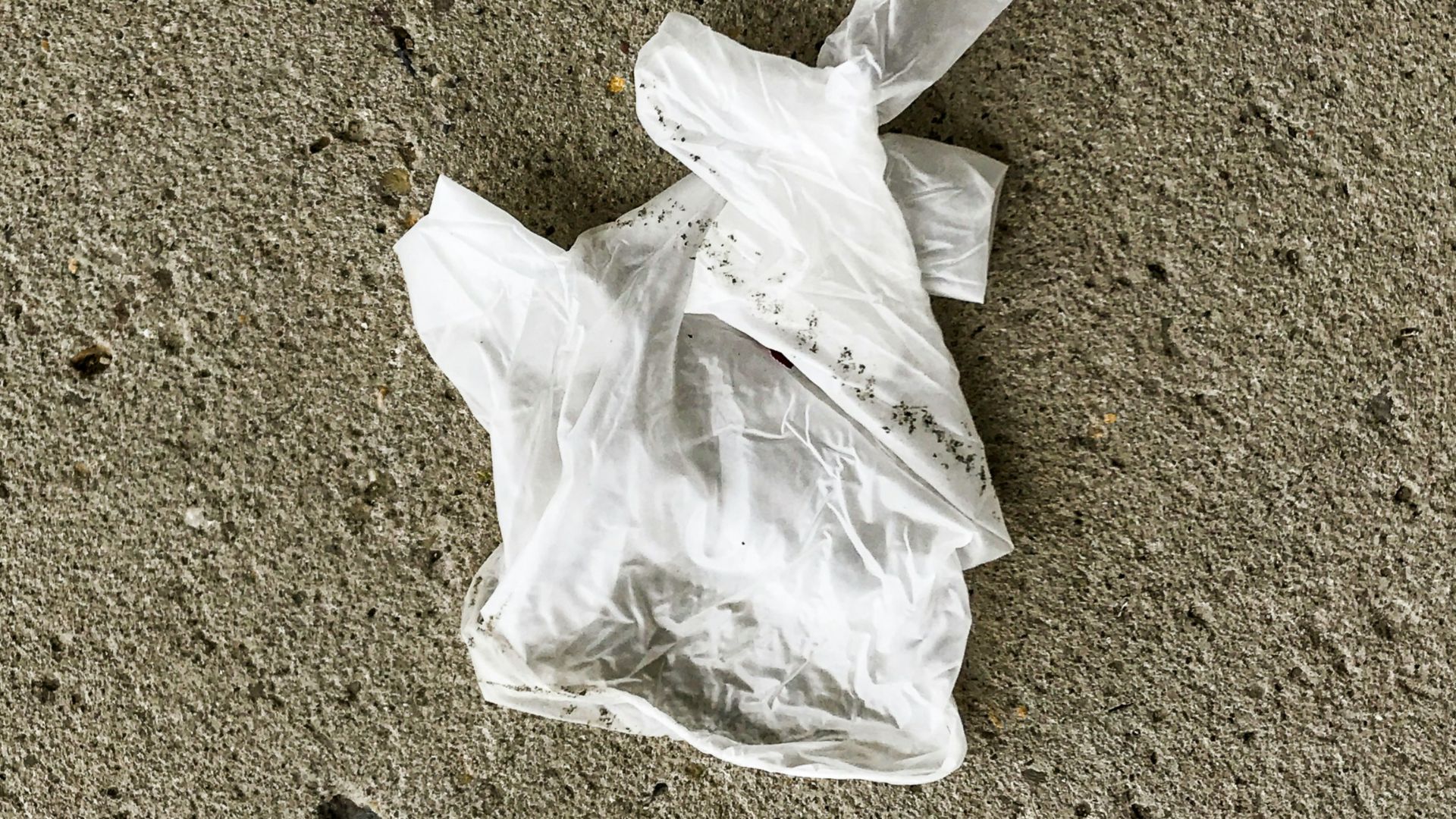 Mohammad Shahhosseini, Unsplash
Mohammad Shahhosseini, Unsplash
Seismometer Impacts
When Apollo astronauts blasted off, they deliberately jettisoned used modules and equipment, letting them crash into the Moon. These impacts acted as artificial “moonquakes” for seismometers to study. It was science by smashing—and the wreckage remains scattered across the surface.
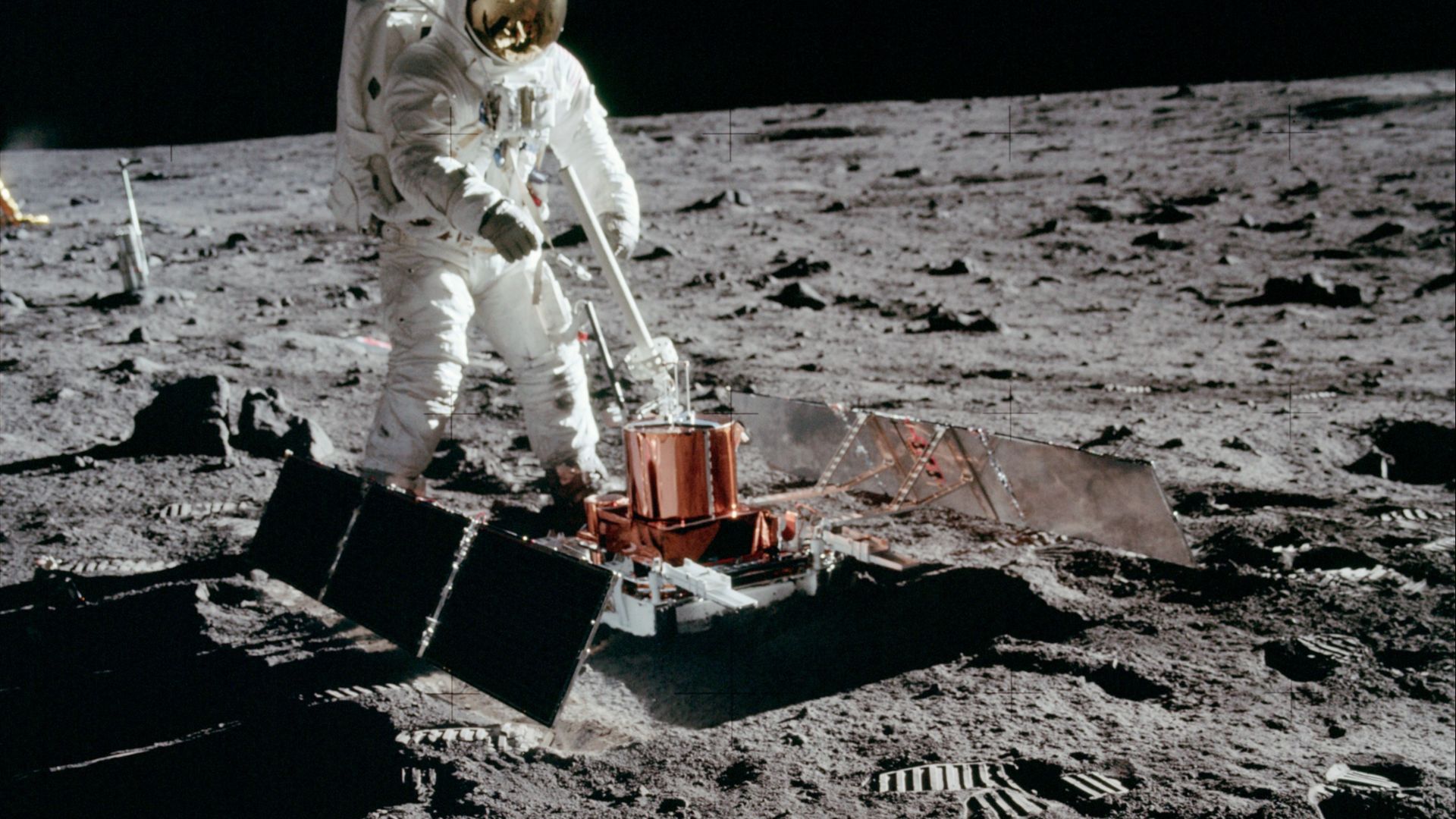 NASA/Neil Armstrong, Wikimedia Commons
NASA/Neil Armstrong, Wikimedia Commons
Soviet Lunokhod Rovers
The U.S. wasn’t the only one leaving gear behind. The Soviet Union landed unmanned Lunokhod rovers in the 1970s. These chunky, remote-controlled machines drove for months before their batteries died. Their remains are still parked on the lunar surface.
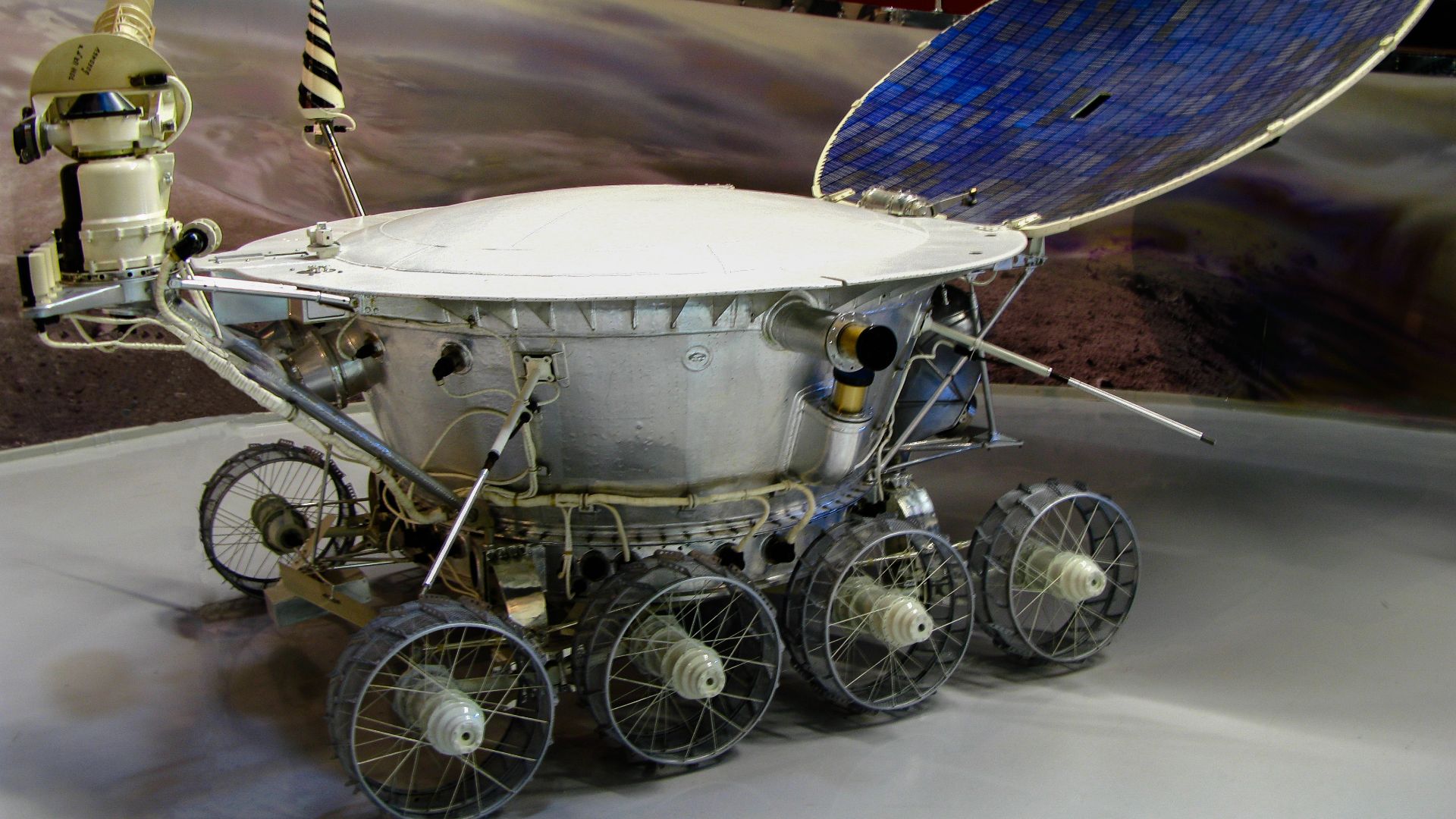 Petar Milošević, Wikimedia Commons
Petar Milošević, Wikimedia Commons
Soviet Pennants and Hardware
Early Soviet probes like Luna 2 and Luna 9 left pennants emblazoned with the USSR’s hammer and sickle, as well as fragments of their spacecraft. Some crash-landed, others survived intact—but they mark the Moon as a Cold War archive.
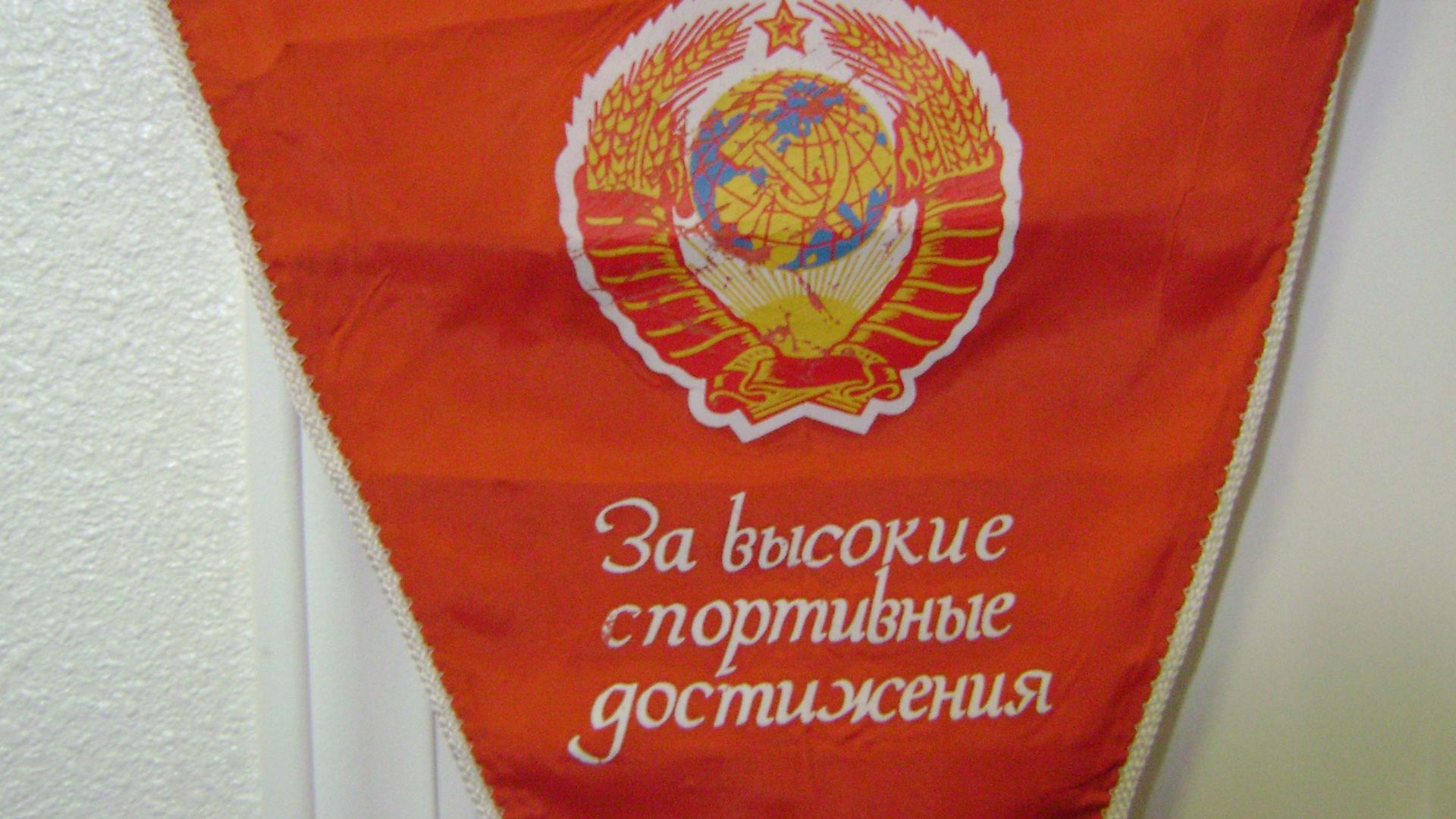 Zscout370 at English Wikipedia, Wikimedia Commons
Zscout370 at English Wikipedia, Wikimedia Commons
The Apollo Lander Bases
Every Apollo Lunar Module lifted off using only its upper stage, leaving behind the bottom half as a launchpad. These descent stages are still at each landing site, squat reminders of the first extraterrestrial “campsites.”
The Lunar Dust Detector
Apollo 17 left a dust detector designed to measure how clingy lunar dust accumulates on surfaces. It worked well, but eventually shut down. Today, it’s buried under the very dust it was meant to study—an ironic end for a space gadget.
Hammock Straps and Space Camping Gear
Inside the lunar modules, astronauts sometimes rigged hammocks to sleep. Once used, straps and fittings were often discarded to lighten the load before return. These random bits of “space camping” gear remain scattered on the Moon.
 NASA Charles Pete Conrad, Wikimedia Commons
NASA Charles Pete Conrad, Wikimedia Commons
Humanity’s 413,000 Pounds of Stuff
In total, humans have left more than 187,000 kilograms (413,000 pounds) of material on the Moon. Some of it is priceless science equipment, some is art, some is deeply personal—and some is just trash. Together, it forms the weirdest museum humanity has ever made.
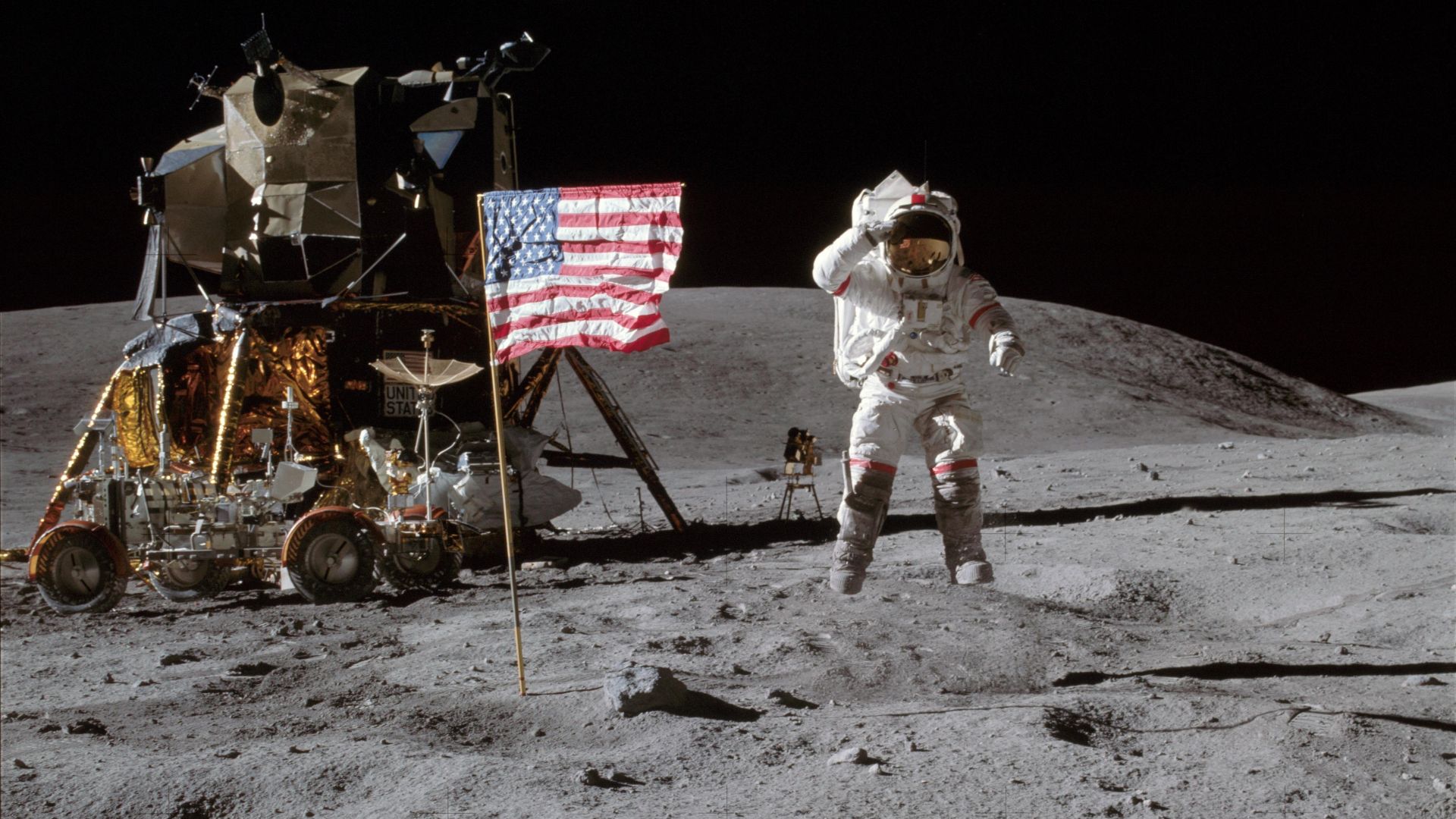 Charlie Duke, Wikimedia Commons
Charlie Duke, Wikimedia Commons
You Might Also Like:
Ranking The Most Tech-Advanced Countries In The World—According To Data

